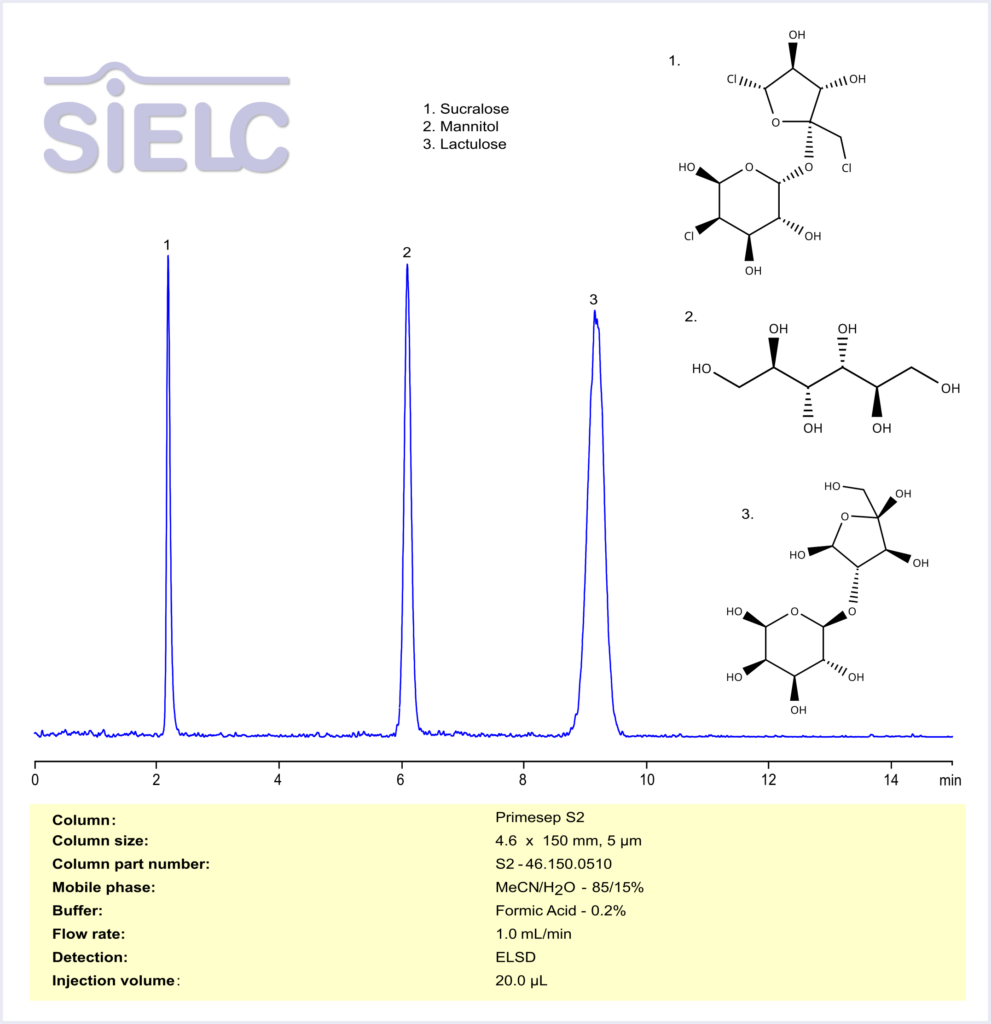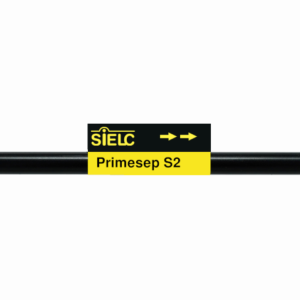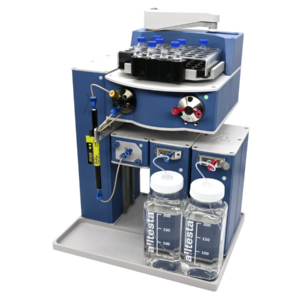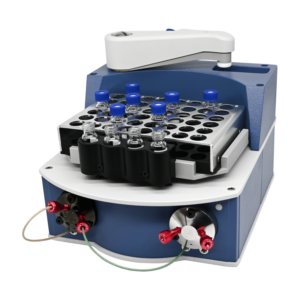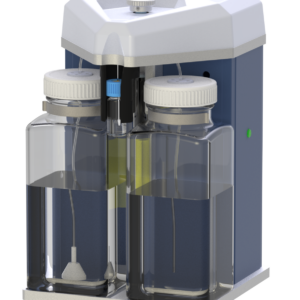HPLC Method for Sucralose, Mannitol, Lactulose on Primesep S2 by SIELC Technologies
High Performance Liquid Chromatography (HPLC) Method for Analysis of Sucralose, Mannitol, Lactulose
Sucralose is an synthetic organochlorine compound with the molecular formula C12H19Cl3O8.
Properties:
Appearance: Typically a white, odorless, crystalline powder.
Molecular weight: ~397.6 g/mol
Solubility: Soluble in water.
Uses: An artificial sweetener used to provide sweetness in food and beverages without the calories of sugar.
Mannitol is an organic compound with the molecular formula C6H14O6.
Properties:
Appearance: Typically a white, odorless, crystalline powder or granules.
Molecular weight: ~182.17 g/mol
Solubility: Soluble in water.
Uses: A versatile medication with various uses in healthcare, primarily as an osmotic diuretic.
Lactulose is an synthetic disaccharide with the molecular formula C12H22O11.
Properties:
Appearance: Typically a white, odorless crystalline powder with a sweet taste.
Molecular weight: ~342.30 g/mol
Solubility: Soluble in water.
Uses: Used for treating constipation and hepatic encephalopathy (HE).
Sucralose, Mannitol, Lactulose can be retained and analyzed using the Primesep S2 stationary phase column. The analysis utilizes an isocratic method with a simple mobile phase consisting of water, acetonitrile (MeCN), and formic acid acid. Detection is performed using ELSD.
| Column | Primesep S2, 4.6 x 150 mm, 5 µm, 100 A, dual ended |
| Mobile Phase | MeCN – 85% |
| Buffer | Formic Acid – 0.2% |
| Flow Rate | 1.0 ml/min |
| Detection | ELSD |
Application Column
Primesep S2
Column Diameter: 4.6 mm
Column Length: 150 mm
Particle Size: 5 µm
Pore Size: 100 A
Column options: dual ended
Mannitol
Sucralose

